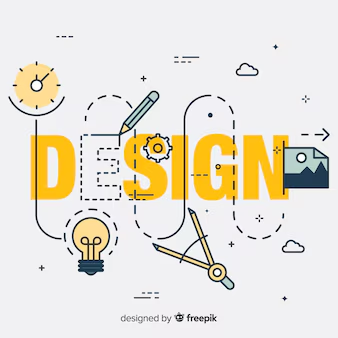“Design: Shaping the World Around Us with Creativity and Purpose”

Abstract:
This article explores the multifaceted realm of design, examining its diverse applications, principles, and impact on society and the environment. Through an exploration of design disciplines, processes, and trends, it highlights the pivotal role of design in shaping human experience and fostering innovation and sustainability.
Introduction:
The introduction sets the stage by defining design as a creative process that integrates aesthetics, functionality, and user experience to solve problems and meet human needs. It emphasizes the ubiquitous presence of design in everyday life, from the products we use to the spaces we inhabit, and underscores its potential to inspire, delight, and improve quality of life.
1. Design Disciplines:
– This section provides an overview of key design disciplines, ranging from graphic design and industrial design to interior design, fashion design, and user experience (UX) design. It explores the unique characteristics and methodologies of each discipline, highlighting their respective roles in shaping tangible and intangible aspects of the built environment and digital interfaces.
2. Principles of Design:
– Building upon the foundation of design disciplines, this section examines the fundamental principles that govern effective design practice. It explores concepts such as balance, proportion, harmony, contrast, and hierarchy, elucidating how these principles inform decision-making and foster coherence, usability, and visual appeal in design solutions.
3. Design Process:
– Focusing on the iterative nature of design, this section explores the stages of the design process, from research and conceptualization to prototyping, testing, and implementation. It highlights the importance of user-centered design methodologies, collaboration, and iteration in generating innovative and user-friendly solutions that address real-world challenges.
4. Design for Sustainability:
– In the context of pressing environmental and social challenges, this section discusses the imperative for sustainable design practices. It examines how designers are integrating principles of eco-design, circular economy, and social responsibility into their work to minimize environmental impact, reduce waste, and promote equitable and inclusive design solutions.
5. Emerging Trends in Design:
– Looking ahead, this section explores emerging trends and technologies shaping the future of design. It discusses the influence of digitalization, artificial intelligence, virtual reality, and biomimicry on design processes and outcomes, as well as the growing emphasis on inclusive design, accessibility, and ethical considerations in design practice.
Conclusion:
The conclusion reflects on the transformative power of design to create positive change and foster human connection, empathy, and well-being. It emphasizes the need for interdisciplinary collaboration, lifelong learning, and a holistic approach to design that considers the broader social, cultural, and environmental contexts in which design operates.
By celebrating the diversity, principles, and impact of design, this article aims to inspire readers to recognize the significance of design in shaping the world around us and to engage more deeply with design thinking and practice.
Would you like me to provide more details on any specific aspect of design?

